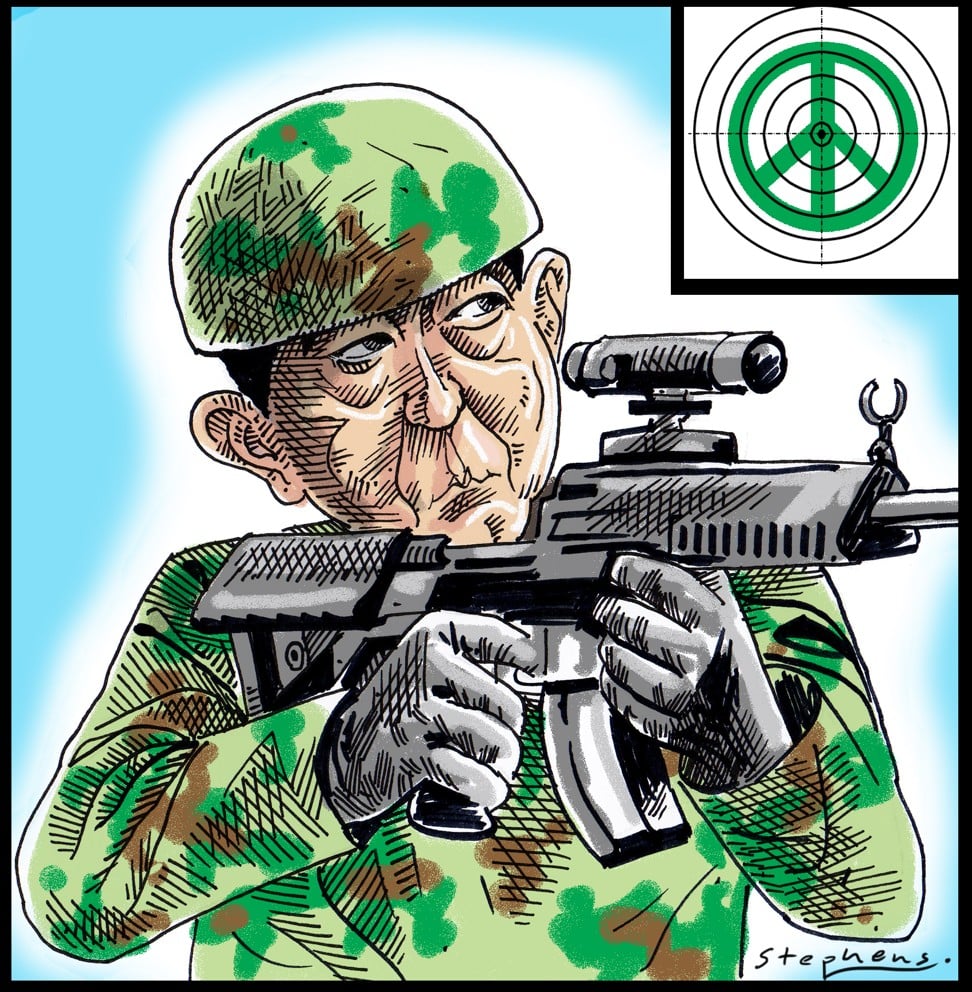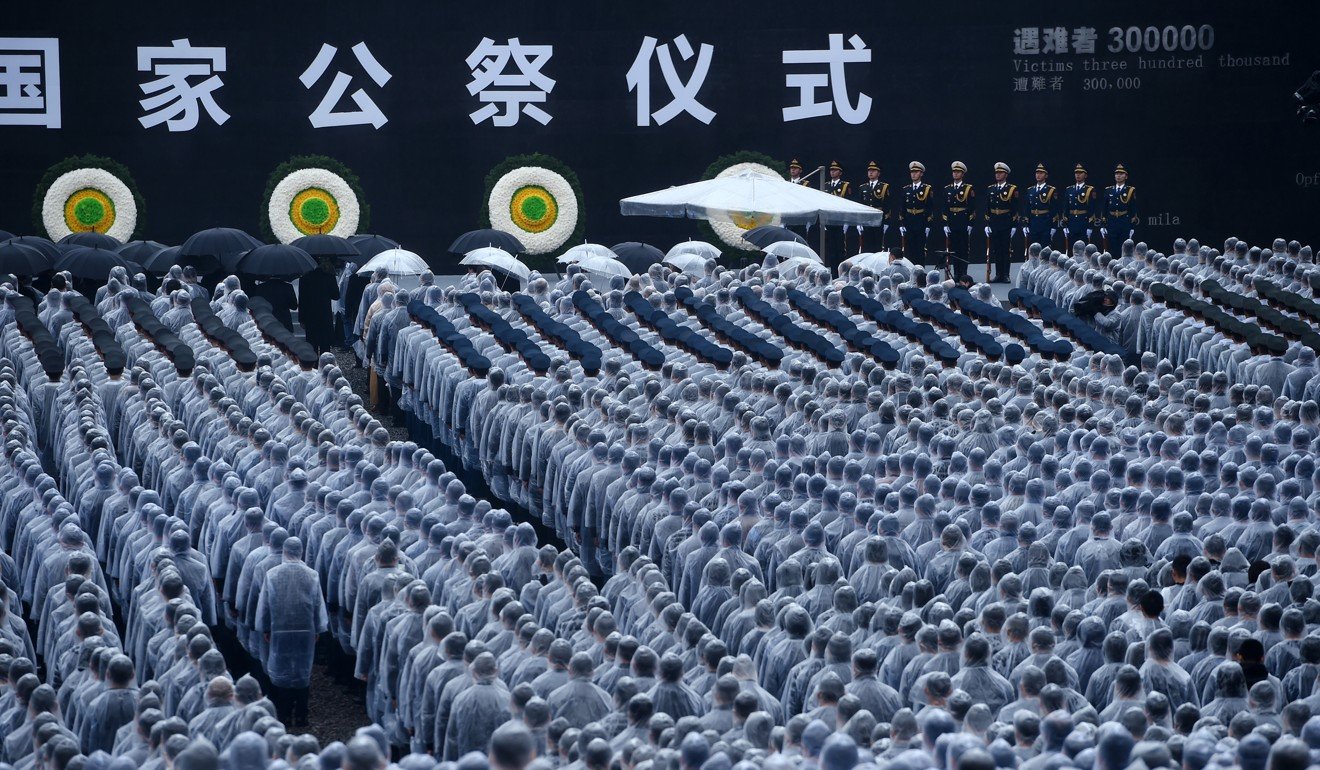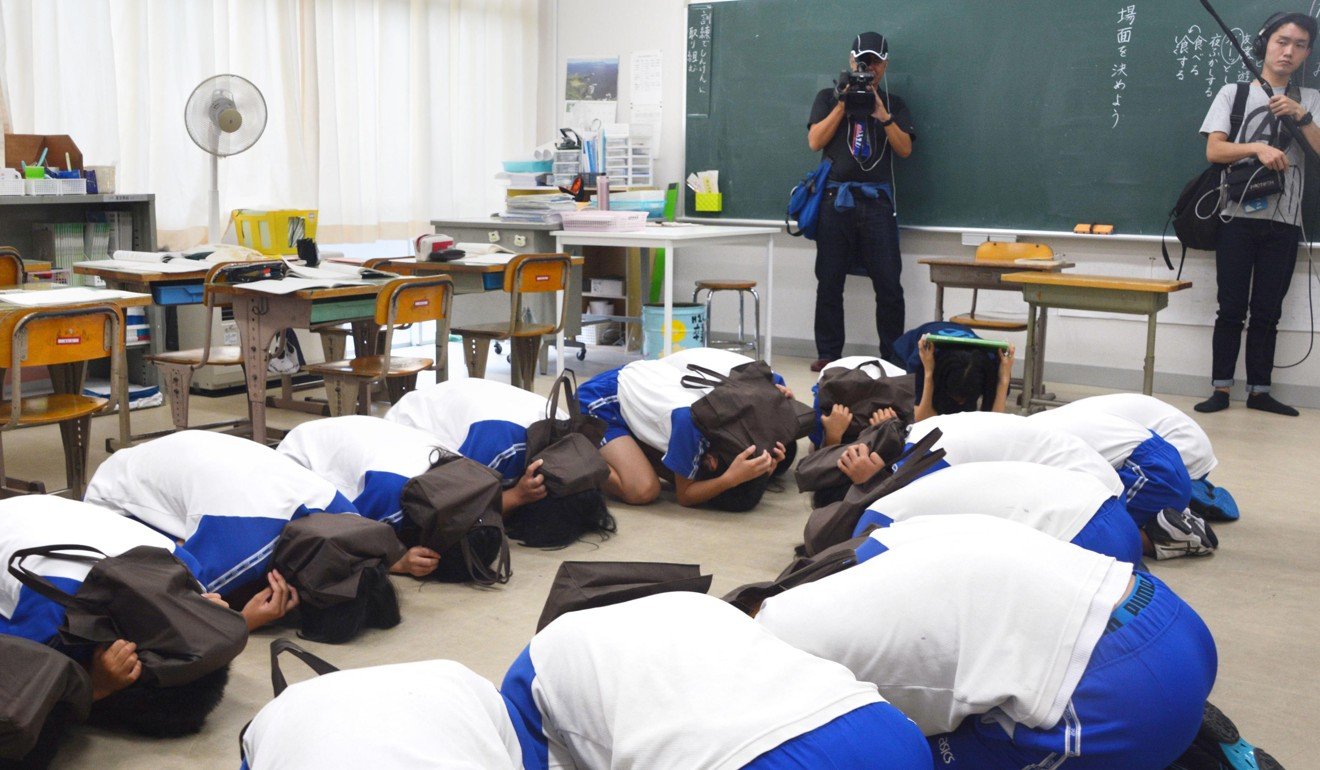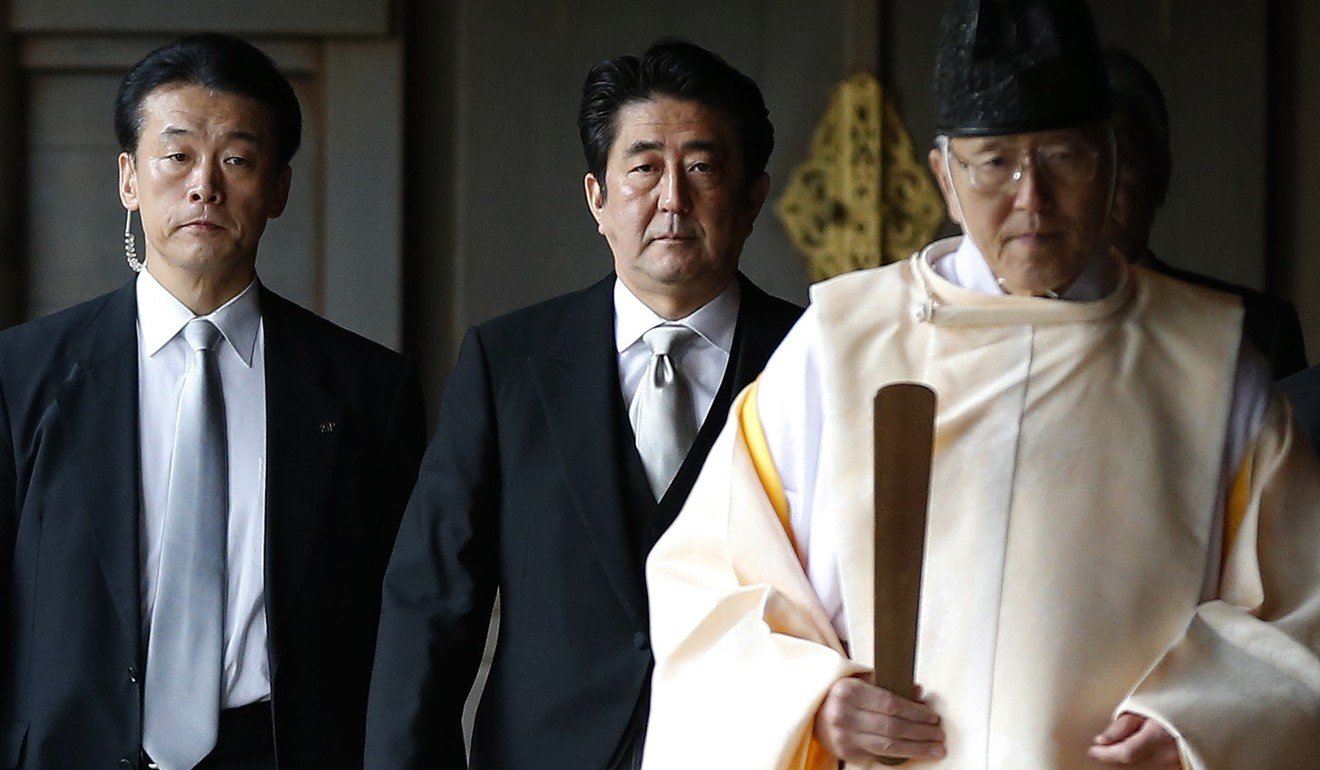
Why the US is no threat to China, but a remilitarised Japan, led by Shinzo Abe, may well be
Chi Wang says a Chinese psyche still bearing the scars of the Nanking massacre has reason to feel threatened, as Prime Minister Shinzo Abe leads Japan towards remilitarisation by abolishing Article 9 of its US-influenced pacifist constitution


It was the most violent act in modern Chinese history, with estimates of those killed ranging from 200,000 to 300,000. Never before had any foreign power killed so many Chinese civilians so systemically or so brutally. The attack left the city, now named Nanjing, burnt and ravaged, and struggling to recover for decades.
Although there were internal wars in China and rebellions that resulted in the deaths of citizens, there was never any systemic killing that compared even remotely with the depths of the Nanking massacre.
This year marks the 80th anniversary of the tragedy. Nanjing itself has grown into a modern city, but the memory of 1937 still lingers in the Chinese consciousness, especially for those of us who lived through the Japanese occupation.
We remember the widespread reach of the Japanese military and its colonial grip on Asia. Japan’s expansionism led it across East Asia, with a foothold in almost every corner of the region until the US forced its surrender. It was the US that then looked after China and ensured its protection from Japan.

Under American General Douglas MacArthur’s direction, Japan drafted Article 9 of its constitution after the second world war, which would “forever renounce war as a sovereign right of the nation and the threat or use of force as a means of settling international disputes ... land, sea and air forces, as well as other war potential, will never be maintained. The right of belligerency of the state will not be recognised.”
This article has stood since its conception. Now, however, its future is uncertain, as Prime Minister Shinzo Abe has announced that he aims to amend this section of the constitution, with a clause that would legitimise the use of Japanese forces for more than self-defence.
Earlier this year, Abe announced plans to revise the pacifism inherent in Article 9. It was not the first time he had expressed a desire to change the constitution since his election. Abe has confirmed his intention to amend Article 9, which calls for a complete renunciation of war, and to make “explicit the status” of the Japanese military, throughout his time in office.
Revision of Article 9 ... was a cornerstone of Abe’s campaign talking points
This year, he promulgated a plan to do so by 2020, and with the results of the snap election just two weeks ago, he and his Liberal Democratic Party (LDP) have further increased the chances of achieving this ambition. Although Abe did not explicitly make the revision of Article 9 the reason for calling the election, it was a cornerstone of his campaign’s talking points.
Never before has the Japanese military been included so openly in a prime minister’s campaign platform. Perhaps this is unsurprising, coming from Abe.
His grandfather, Nobusuke Kishi, also served as prime minister of Japan (from 1957 to 1960), and had served under former prime minister Hideki Tojo as the economic manager of Manchuria in China. In the 1930s, Kishi was among the top officials serving in Manchuria, where his grip on the region was so savage he earned the name “Showa Era Monster”. Abe’s family military ties are hardly reassuring when it comes to the question of restraint.

Despite Abe’s low popularity ratings and some pressure from Tokyo governor Yuriko Koike’s new Party of Hope, the LDP had no problem securing a two-thirds majority in the lower house of parliament. Although they technically already had this majority, Abe’s low personal approval ratings dampened his chances of successfully calling and ratifying an amendment. With such a landslide victory, this has changed.
The election success means Abe is stronger than ever. Post-election polls showed parties in favour of amending the US-drafted charter carried nearly 80 per cent of the seats in the lower house election. Never before have Japanese politicians been so vocally in favour of military reform.
Abe did not just run on a personal platform. He made constitutional amendment a central point of his campaign, in a first for a Japanese election.
Japan claims North Korea is it primary motivation for remilitarisation, citing security concerns as the reason for this escalation. But it has also promised to work closely with the US to maintain stability on the peninsula. Hopefully, visiting US President Donald Trump and his secretary of defence will not encourage Abe to rely further on militarisation.
For now, most are looking at Japan’s short-term goals of North Korean deterrence, but Tokyo is likely to be playing the long game.

Japan’s planned restoration of its military and the continued election of conservative politicians are threatening events for countries it invaded in the past. I was in the sixth grade in 1942, living with my family in Hong Kong, when the Japanese invaded. I watched as Japanese torpedoes entered the harbour and killed British troops. Japanese shell shrapnel damaged our house, blinding one of our household staff and killing another. Trapped indoors in fear of the occupying military, we were left with very little food and water for nearly 25 days – and we were among the lucky ones.

The US, on the other hand, is not a threat to China. Although it has competed and will continue to compete with China on trade, it has never invaded. It never will.
In the 20th century, the normalisation of Sino-US relations, both economic and political, gave China the opportunity to enter the world stage. Even during periods of tense relations, America has helped China and endeavoured to engage, in the interests of better cooperation. China need not worry about a threat from the US but, if Abe abolishes Article 9 of its constitution, the future trajectory of Japan’s military will be threatening indeed.
Chi Wang, a former head of the Chinese section of the US Library of Congress and former university librarian at the Chinese University of Hong Kong, is president of the US-China Policy Foundation